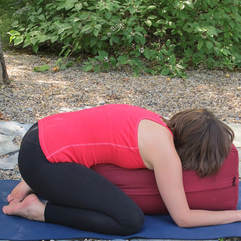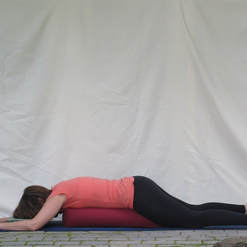|
Recently I was driving with my 9 year old step son, Gabriel, and we were listening to my “Sandy’s Favourites” playlist on Spotify. This song came on: “Ohhh, I love this song,” I said, as I turned up the volume. Gabriel is a musical kid – he can play the guitar and the drums. When he listens to music, he really listens. He’s recently began reading music, and often on our dog walks or drives we compose our own songs: The Mountains are Calling and I Have To Go Pee are two recent ones. “Can you believe someone wrote this song, and is playing it on the piano?” I asked him. I looked in the rear view mirror. He was quiet and had a look of total concentration on his face. I wondered what his thoughts were, but didn’t press him for an answer. We listened for a while longer, then he quietly asked, “Was he sad when he wrote it?" “I think so,” I said. “It sounds sad, doesn’t it?” “Yeah,” he said. “If he was sad when he wrote it then it’s pretty cool that he can show his sadness with music.” “Yeah,” He said again. I wondered how the song landed within him, and how he experienced this particular piece, knowing that for me, it often moved me to tears. He’s a sensitive, insightful and stoic boy. Now, I’m no expert in child development, but I see him struggle to express his emotions with words. Heck, I see adults (myself included) have difficulty expressing my emotions with words. Yet somehow a three-minute piece of music can say so much. Maybe that’s because music is inherently complex with it’s notes, melodies, tempos and pauses. Perhaps that taps into the complexities of our emotions that are too complex to adequately relate with the structure and limitations of a few words. And maybe this is true of all modes of non-verbal expression - art, dance, tears, movement, yoga - it somehow captures more; more broadly, more deeply, more wholly…more something. These avenues of expression are multifaceted. Yoga for example, has a dual relationship with emotion. It can both reflect it and release it. There have been many times that my mood or emotion dictates my yoga practice: a supported child’s pose, or prone savanasa to help soothe me or turn my attention inward. Conversely a more vigorous practice reflects my inner energy, whether it was heightened from adequate rest or agitation. Both the intention and the movement of the practice aligned with my mood, and in that way was an expression of it. There have also been times when my yoga practice released emotion. Slowing down and paying attention to myself, combined with movement, releases energy and emotion. Sometimes I feel it building, and have to intentionally let it release. Sometimes it comes out of now where and takes me by surprise. Twists seem to do it for me, or during savasana when emotion hits a rolling boil and spills over. That release is an expression of something so complex that I can’t even describe it with words. What about you? What has been your experience with the expression of emotion that is beyond/outside/in addition to words? If you’re curious about exploring this more in your own personal yoga practice, consider signing up for my 8 week online yoga program: a holistic and practical program designed to use yoga in a way that supports, reflects, and moves grief. And, if you want to explore some of the music I use, you can find it on Spotify.
1 Comment
Annie Ann
2/20/2018 07:12:09 pm
The power of music...amazing!
Reply
Your comment will be posted after it is approved.
Leave a Reply. |
AuthorSandy Ayre Categories
All
Archives
December 2022
|
Classes
|
Helpful Info
|
|



 RSS Feed
RSS Feed
